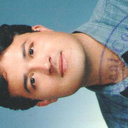Predisposing factors, clinical presentation and outcome of repeated aspiration in cerebral abscess through a drainage tube in situ.
Mots clés
Abstrait
BACKGROUND
Cerebral abscess is a serious and life threatening complication of several diseases. Aspiration of the abscess cavity versus excision of capsule are still in debate for the capsulated, large, superficially located abscesses especially in patients with poor surgical fitness. The objective of this study was to look for the clinical presentation and outcome of patients with repeated aspiration in cerebral abscess through a drainage tube in situ.
METHODS
This prospective study was conducted in Department of Neurosurgery, Ayub Medical College, Abbottabad from Jan 2010 to Jun 2011. Twenty-three patients with age ranges 6-21 years who had large, solitary, capsulated, superficially located abscesses, were included in this study. These patients had poor American Society of Anaesthesiologists (ASA) grading (grade III and IV). After thorough clinical examination and workup, patients were subjected to operative procedure. The procedure included placement of 8 size nasogastric tube in the abscess cavity through a single burr hole. Under strict aseptic conditions, repeated aspiration of pus was done through the drain daily for 2-4 days consecutively at intervals of 24 hours. The demographic data. predisposing factors, clinical presentation, and outcome of patients with repeated aspiration through drain placed in abscess cavity were recorded. Postoperatively, gadolinium enhanced CT-scan was done twice in the first month at the span of two weeks each, later on monthly for next 3 months. The CT-scans were reviewed for recurrence or any other possible intracranial complications. Patients were followed for duration of 3 to 6 months.
RESULTS
The predisposing factors found were congenital heart disease in 7 (30.4%) patients, spread of contagious infections like mastoiditis/Chronic suppurative ottitis media in 5 (21.7%) patients, sinusitis in 2 (8.6%) patients, meningitis in 5 (21.7%) patients, septicemia in 3 (13.7%) patients, and penetrating cranial injury in 1 (4.34%) patients. In 16 (69.5%) patients presenting complaints were headache and vomiting, altered sensorium in 8 (34.7%) patients, hemiparesis in 9 (39.1) patients, aphasia in 3 (13.1%) patients, papillodema in 2 (8.7%) patients, and seizures in 1 (4.34%) patients. The abscess resolved in 19 (82%) of patients, recurrence occurred in 2 (8.7%) of patients, and death occurred in 2 (8.7%).
CONCLUSIONS
Cerebral abscess is a life threatening condition requiring aggressive management measures. Aspiration of cerebral abscess with repeated aspiration through a drainage tube is a life saving in patients with poor ASA grade with low recurrence of abscess formation and low mortality.





